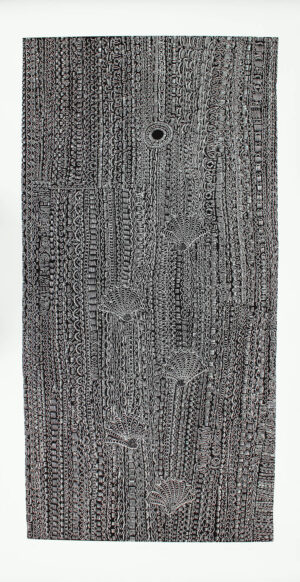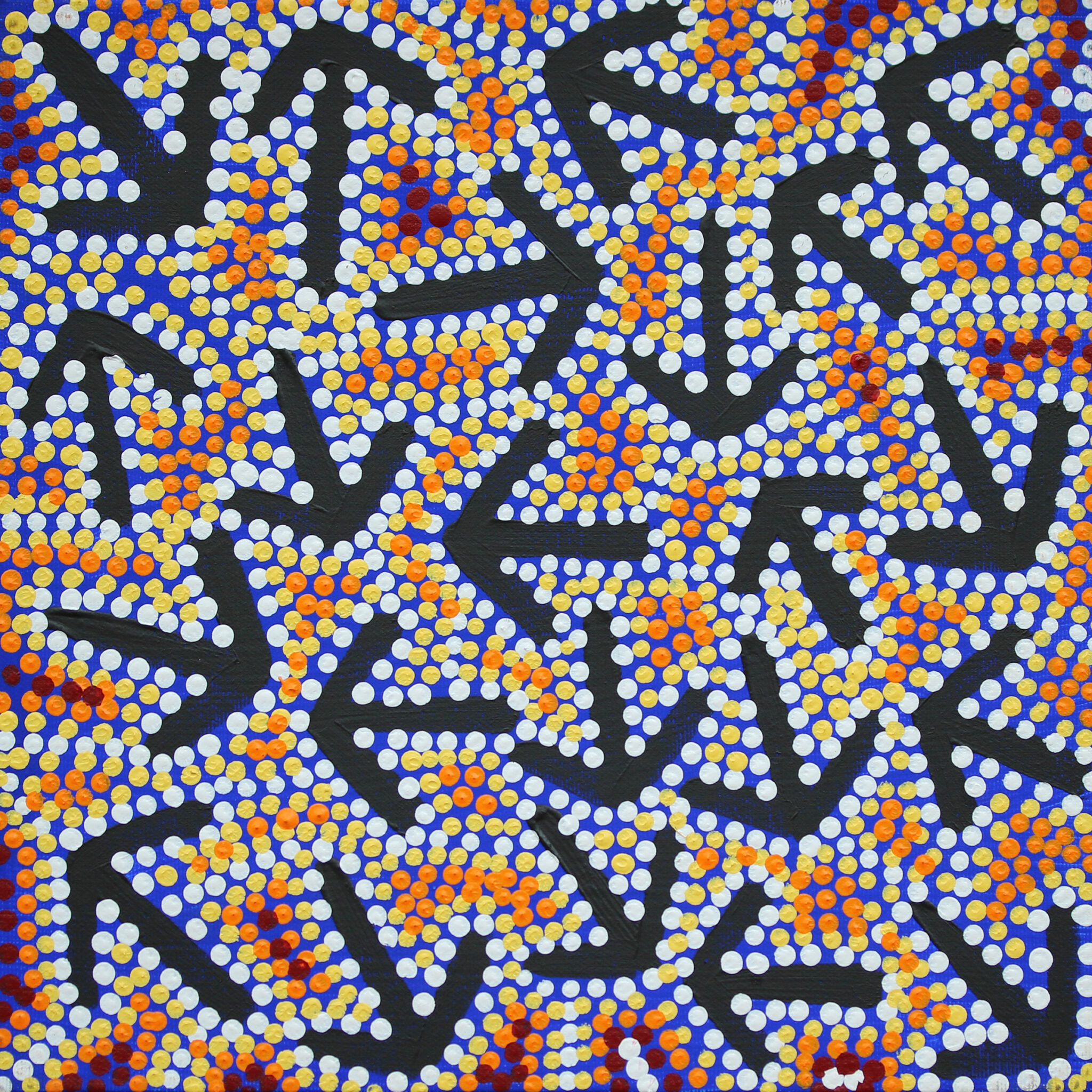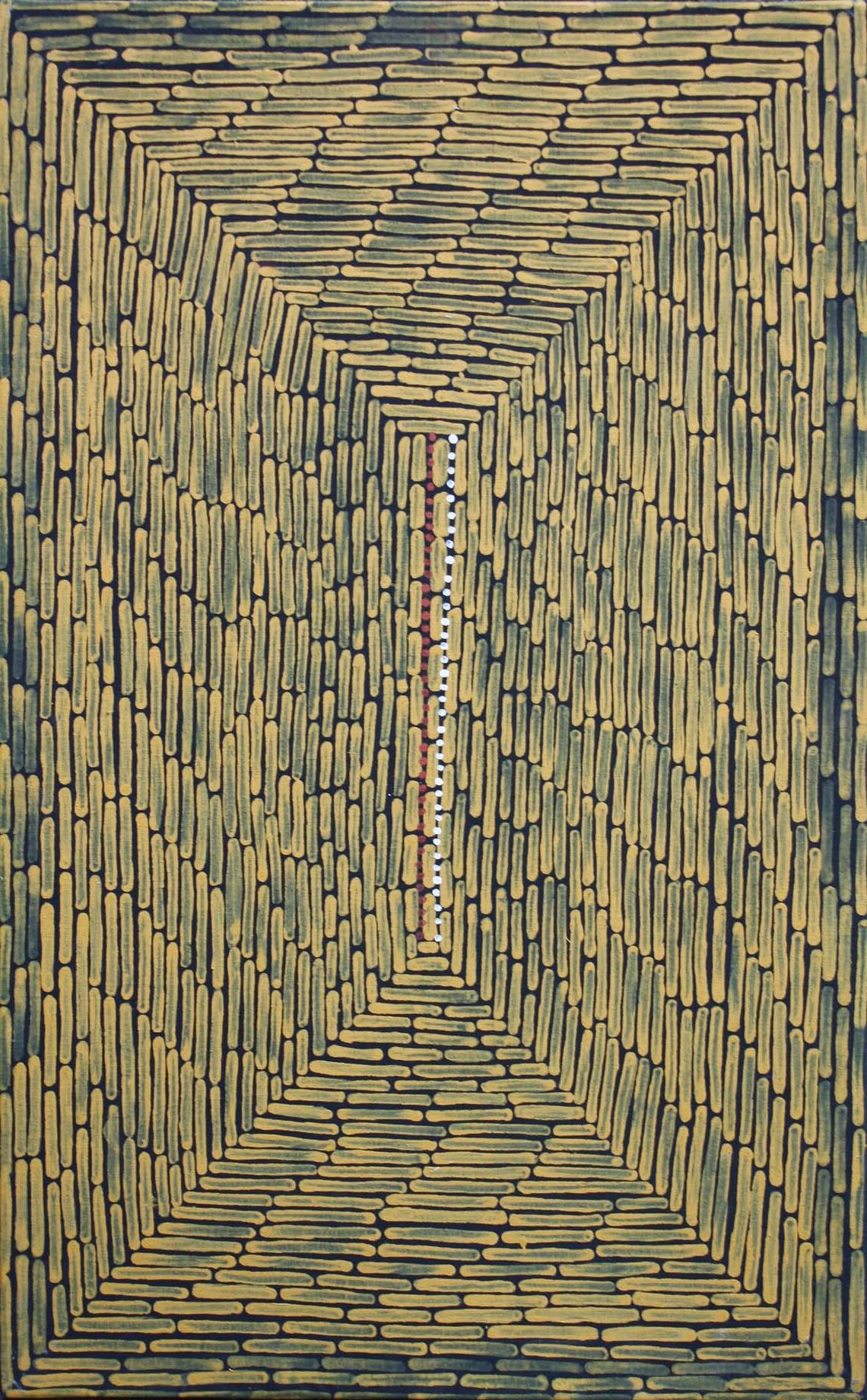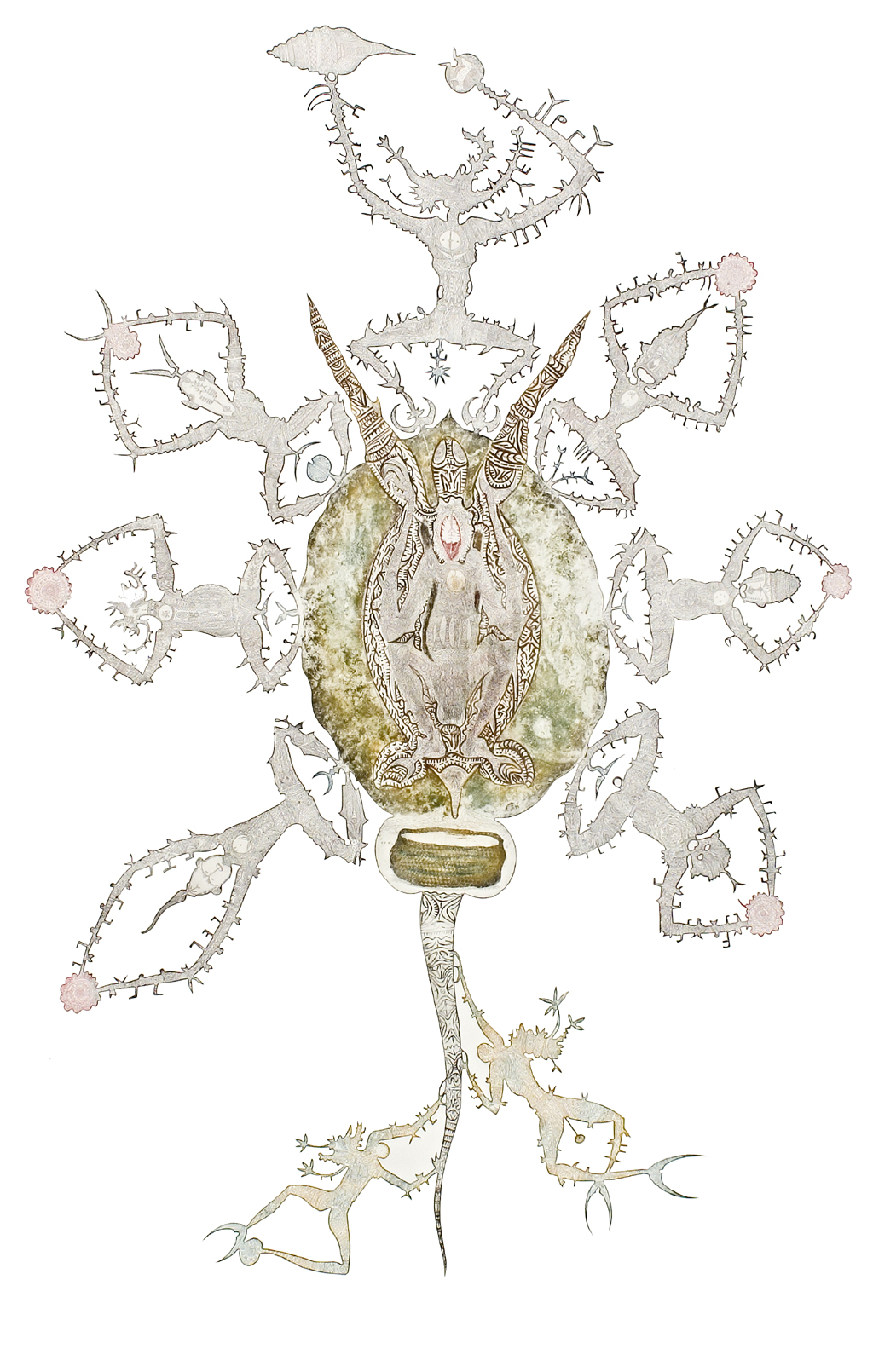Serial:
Size:
$12,000 (tax inc.)
1 in stock
The story:
Goba is a true story from the artist’s island of Badu. It is about a dishonest and greedy man who traded between the two main Badu Island villages of Argan and Wakid. Argan is near reefs teaming with fish and turtle while Wakid is near estuary mangroves and swamps with abundant mud crabs and shellfish. These localities provided the resources that enabled Goba to successfully trade between the two villages. At Argan he caught turtle which he exchanged for Bui Sama at Wakid. Bui Sama is made from mangrove pods (Buid) and is an important ingredient in the cooking of turtle meat. Its preparation was a process that was only known to the Wakid people at that time. The Wakid people became suspicious of Goba as the turtle he was trading had very little fat and often no liver, both of which are prized parts of the turtle. Goba made unlikely excuses as to why this was so which heightened the Wakid people’s suspicions. The chief (Kuiku Mabaig) of the Wakid Kwod (group of clan leaders) instructed two members to spy on Goba. They observed him resting under a tree at Kainply, which is an area in the middle of Badu, where he was seen to be eating the fat and other prized parts of the turtle. The Kwod on becoming informed of Goba’s duplicity ordered that Goba be stoned and buried alive.
The figure of Goba is seen inside the turtle that is overlaid on a stingray or Tupmul, which is one of the Argan clan totems. The figure at the top of the print is the Kuik Mabaig who is the Chief of the Kwod. He is holding a Bu shell that is blown to summons the members of the Kwod together. A dog or Umai is seen in the circular element in his other hand, which is another important Island totem. The two figures at the base of the print are the two Wakid villagers that were sent to spy on Goba. The other six figures are holding the rocks that were used to stone Goba to death. At the top of the tail of the stingray is a basket or Abatuli that Goba used to carry the Bui Sama that he traded to the Argan people. A Remora or sucker fish that was used in the traditional hunting of turtle is seen to the right hand side of the stingray’s body. Goba is seen inside the turtle wearing a traditional mask (Buk) with feathers and grass skirt (Zazz) that is adorned with strings of shells. Goba’s hands and feet are seen flowing into the flippers of the turtle. The long thin elements seen on Goba’s torso are the Buid or mangrove pods. Goba is wearing a traditional pendant or Dibadib incised with the Tupmul or stingray totem.
The making and use of the Bui Sama is an involved and complex process. The Buid or mangrove pods are placed in an Abituli (basket) and soaked in a freshwater creek (Sarrka) for about one week. When they become soft they are dried in the sun on a Wak or grass mat. The pods are then minced and mixed with the turtle meat prior to cooking. The Bui Sama helps break down the fat and enhances the flavour of the meat. Goba’s burial place is a sacred site that can be seen as a mound of rocks on Badu Island today.
Related artwork:
Related products
-

DN185
$1,500 – $1,980 (tax inc.) View artwork This product has multiple variants. The options may be chosen on the product page -

DN133
$1,250 (tax inc.) View artwork This product has multiple variants. The options may be chosen on the product page -

DN097/2
$9,180 (tax inc.) View artwork -

DN553/AP
$7,875 (tax inc.) View artwork -

DN509
$990 – $1,430 (tax inc.) View artwork This product has multiple variants. The options may be chosen on the product page -

DN090/16
$9,250 (tax inc.) View artwork
-
29 Hunter St, Hobart 7000,
Tasmania, Australia - +61 3 6236 9200
- euan@artmob.com.au
Cash – locally only – up to $10,000 only. Layby facilities available. Card details can be advised securely using WhatsApp.
© Art Mob Pty Ltd, Aboriginal Fine Art Dealer, all rights reserved.



